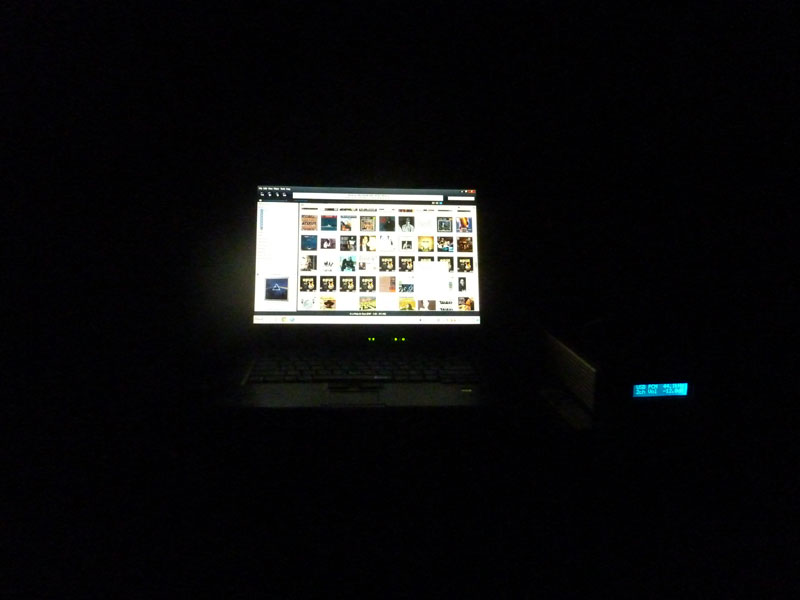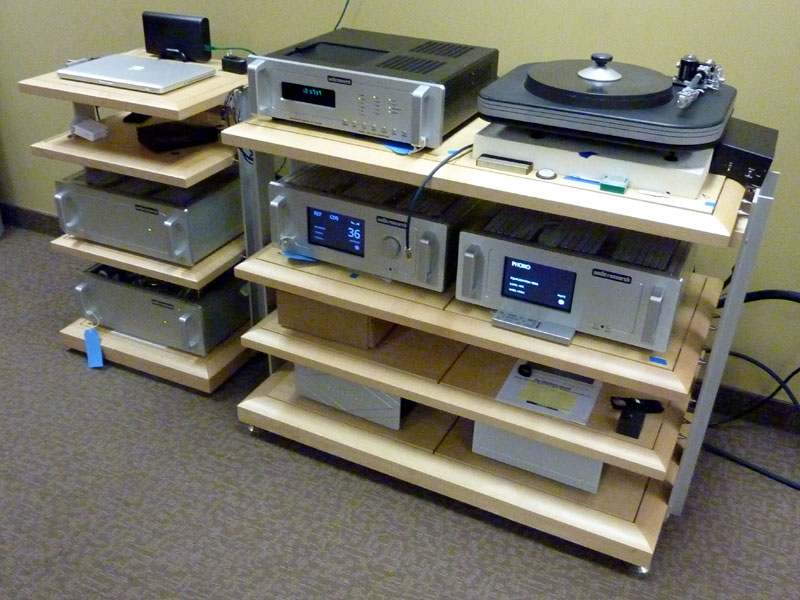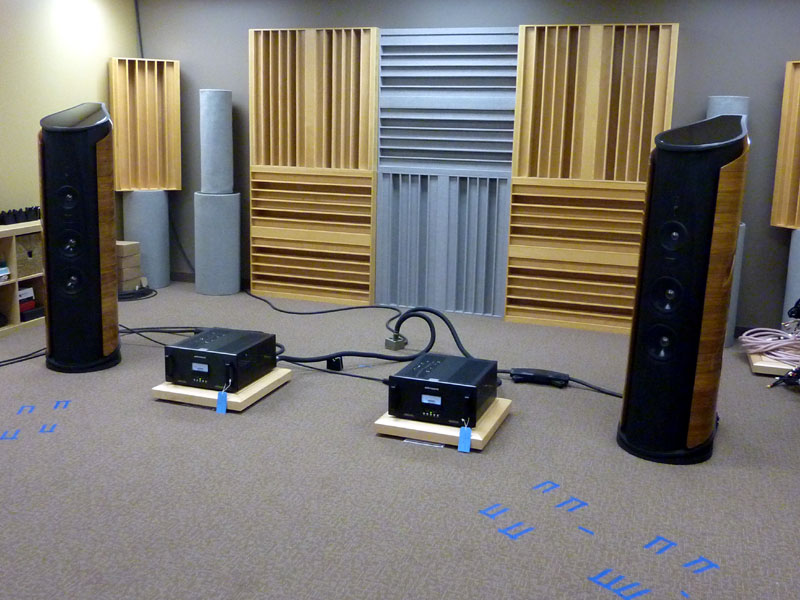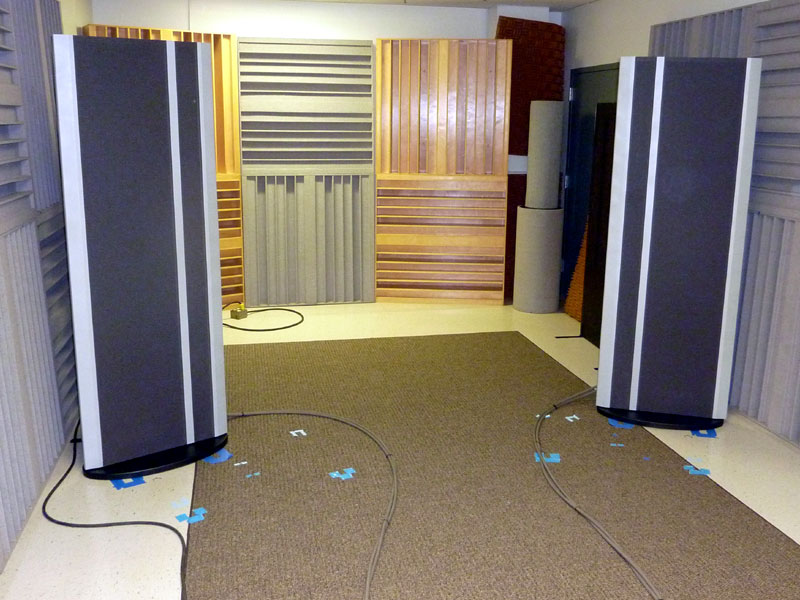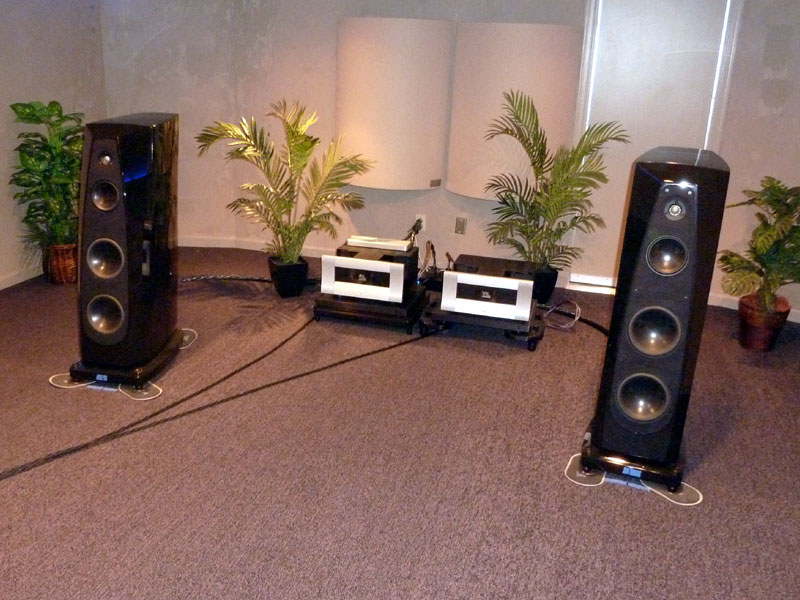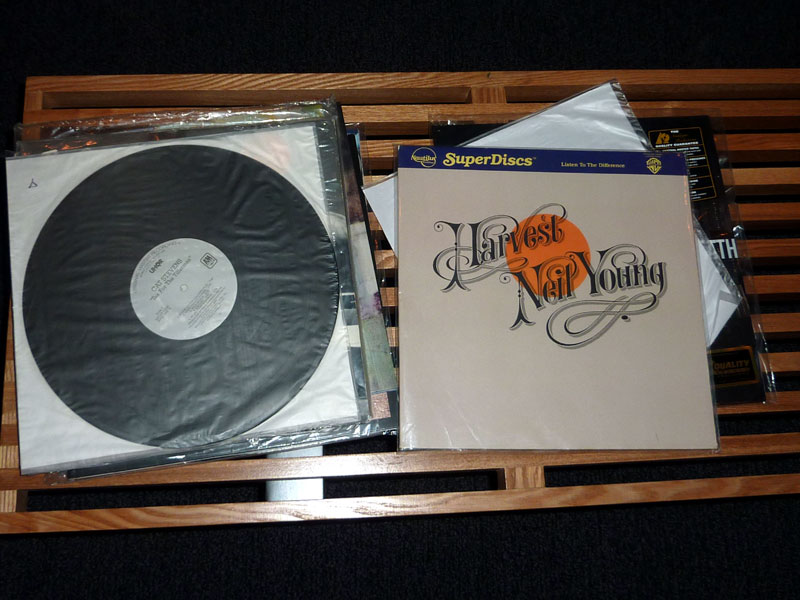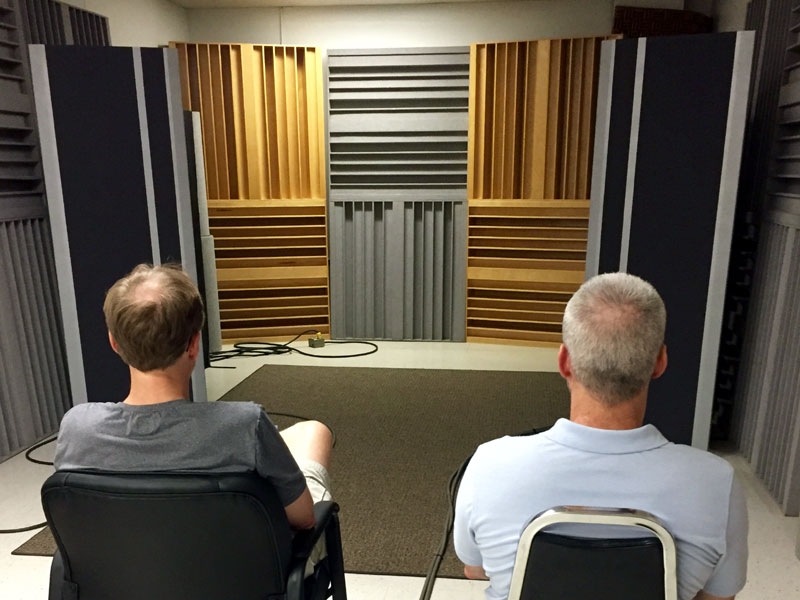Four Systems in Three Days: Twin Cities Audio Tour 2015
y annual visit to Minneapolis/St. Paul, home to a profusion of audio companies, came later than usual -- a year later, in fact. Each summer I normally visit family in Southern Wisconsin before driving up to the Twin Cities, but in 2014 family visited me instead. The trip this year happened right before the trees began turning and right in the middle of the usual streak of hot, humid weather. My first stop was Magnepan in White Bear Lake, which is a little east and north of the Twin Cities. I've seen no bears here, white or not, but the name White Bear Lake seems quintessentially Minnesotan. What is quintessentially Magnepan, at least to me, is listening in the dark -- and by this I mean absolute, crow-in-a-coal-mine blackness. Magnepan's large listening bunker has cinderblock walls and no windows. It might be the building's fallout shelter, which also makes it suitable for the sonic experiments Wendell Diller of Magnepan conducts here.
In past visits, I was led into the room by flashlight, the beam illuminating the path to the chair. This time, the glow from a computer screen led the way. After a short pause, a truly massive soundstage filled my entire view, sonically speaking. I was hearing full-sized images -- standing people singing or playing -- without any break in the spread from left to right. Depth was a function of the layering of the musicians, not the sort of crescent-moon-shaped perspective in which the center image is set back from everything happening right and left. It was really as though there weren't two speakers but rather a single massive one creating a continuous, palpable field of music, no matter the recording. I knew what I had to be hearing, because I had heard it before -- at Magnepan, CES and THE Show Newport: Magnepan's Tri-Center along with a pair of full-sized panel speakers. Given the immensity of it all, I would have guessed that 20.7s were used right and left, but it was "only" 3.7i's ($5995/pair). As a reminder, the Tri-Center is a pair of motorized MMC2 wall-mounted speakers ($1995/pair) and a CCR center-channel speaker ($2995). The MMC2s flank the CCR, three speakers in total, hence the name Tri-Center. This combination never ceases to impress, N-E-V-E-R. But that only adds to the irony: outside Magnepan and the odd show where it is demo'ed, you can't hear the Tri-Center. There isn't a single Magnepan dealer in the US or overseas using the Tri-Center -- not one. This is nothing new; I observed the same ("It needs exposure . . . ") when I wrote about it in 2011. I suppose the name Tri-Center has something to do with the lack of acceptance, its connotation of home theater not helping matters. However, as I've experienced it, the Tri-Center unequivocally improves listening to stereo music. This is important. We audiophiles are supposed to be all about the sound of music, and that's what the Tri-Center is about. But . . . you can't hear it anywhere. This is crazy -- and a golden opportunity for a few dealers to not only differentiate themselves but also take the sonic high road and demo a speaker system that truly makes a difference. Magnepan has it right: sell the sound, not the stuff.
Audio Research is located on the opposite end of the Twin Cities universe from Magnepan, but there has been plenty of collaboration between the companies through the decades that both have been in business. This continues today, even as Audio Research is now part of the Fine Sounds audio consortium that includes speaker maker Sonus faber. Not surprisingly, a pair of lovely and dramatic Sonus faber Aida speakers ($120,000/pair) was in use in Audio Research's big demo room. Electronics were Audio Research Reference 250 SE mono amps ($34,000/pair), a Reference 10 line stage ($30,000), a Reference 10 Phono phono stage ($30,000), and a Reference CD9 CD player/DAC ($13,000) with a MacBook feeding data.
The sound of this system was palpable, dimensional and just plain seductive -- swoon-making, even, with vocal music like the many tracks I played from Suzanne Vega's great Close-Up Series six-CD set [Amanuensis 2507]. The bass was round and deep, although not as powerful as I've heard from various Wilson Audio speakers used in this same room. It is very hard not to like the sound of Sonus faber speakers -- any that I've heard at length. Their sweet tonality and natural rendering of detail mirror the sound of great analog, even when the source is digital. In some ways they remind me of the ProAc speakers I've liked for so many years; perhaps not coincidentally, ProAc once had pride of place in this same room. Back to collaboration with Magnepan. The second listening room in the Audio Research facilities is primarily used by Warren Gehl for quality-assurance testing. Warren puts each product into his test system, listens to it, then either gives the green light for it to be packed and shipped or provides notes on what is not quite right, in which case it goes back to production. Warren is unique in the audio industry for this reason; he's also a committed audiophile who digs up interesting, sometimes obscure music. In the past, Warren has used a steady parade of Wilson Audio speakers in this room -- and they've sounded universally superb. But this time, a pair of Magnepan 20.7s ($13,850/pair) replaced the Sasha W/Ps I heard two years earlier. As you can see from the picture below, the area of this L-shaped room where the speakers reside is not particularly wide; the 20.7s look all the more like "big old barn doors," as Dave Gordon of Audio Research has cleverly called them. After much movement and tweaking (Warren is skilled and meticulous at setting up speakers) the 20.7s ended up within inches of the diffusers on both side walls and close to the listening seats -- what looked like less than ten feet for sure (it was actually eleven). The rest of the system was an Audio Research Reference 150 SE amp ($15,000), CD6 CD player ($9000), and what was at the time a prototype preamp but has since been announced as the Reference 6 ($14,000).
When I sat down, before any music was played, I wasn't sure what to think, other than that the speakers looked too close -- both to me and the walls. But when Suzanne Vega's voice came forth, all was forgotten, as my eyes closed and I was, again, hearing a full-sized holograph between and well behind the speakers. The tonal purity and sheer speed were immediately apparent, and they extended from the highest highs to the very bottom of the bass range. Fast bass? Oh, yeah, with incredible pitch definition, detail and impact without even a hint of overhang. The only thing this system didn't have over the 3.7i/Tri-Center system was the absolute soundstage continuousness; but, in contrast, that system didn't go as low as this one, have the same sense of both vanishingly low coloration and endless unforced resolution, and bass sock. Every note settled and faded in an instant, its place taken by the next. As if to add to the overwhelming awe this system created, Warren played some great unknown (to me) ECM CDs along with Art of Noise's Moments in Love EP [RCA Ariola 651757]. When I got back to my hotel, I immediately began shopping for the music Warren played -- and thinking seriously about where I could store 20.7s when I wasn't using them, which is all too often the case when you write about audio gear. This was a magnificent system, singular in a number of ways, easily one of the five best I've ever heard. The next morning, before heading back to Wisconsin, I made my final stop. Paul Blizel of Analog Audio of Minnesota has his audio dealership in the lower level of his home, but entering through the front door, you'd never know it. Downstairs are his purpose-built listening room and a room for record storage at the rear. He also has bins of used records that he sells and a large area that will be turned into a second demo room, along with an area for socializing. I am curious to see all of that once it's finished.
Paul's demo system is heavy with VTL electronics -- a TL7.5 III line stage ($25,000) and MB-450 III monoblocks (20,000/pair) -- driving Rockport Avior speakers ($37,500/pair). The analog rig was mostly Brinkmann: Spyder turntable ($14,000) with 10.5 tonearm ($6300) and RoNt II tubed power supply ($4300). The phono cartridge was a Dynavector XV-1s ($5500) and the phono stage was a Vitus Audio SP-102 Signature ($45,000). Harmonic Resolution Systems' SXR rack ($5995) with M3X isolation bases ($2695 each) and Synergistic Research Galileo cabling completed the system. Paul has a streaming digital setup as well, but I heard it only in passing on the way to analog. One of the things that defines the sound of VTL electronics is how they meld tube tonality with solid-state potency. A VTL-powered system never sounds lean or anemic; the music is always forceful and corporeal -- vivid in the way that it is in real life. Rockport speakers match all of this stride for stride, the entire system having deeply saturated tonal color and solid imaging that give the music an overwhelming sense of in-the-room presence.
Paul has a huge and well-curated LP collection; in fact, I'll go one step further -- I'm jealous. He played a couple of audiophile gems: the Mobile Fidelity UHQR of Cat Stevens' Tea for the Tillerman [Mobile Fidelity MFQR 1-035] and the Nautilus pressing of Neil Young's Harvest [Nautilus NR-44].
If this article were about a trip to someplace I rarely
visit, I'd end by saying that I enjoyed all of the systems I heard and look forward to
second acts at audio shows. But in this case, I'll just say that I will be back to the
Twin Cities next year, and even if nothing about these systems changes, they will be a
prime reason to make the trip. |

